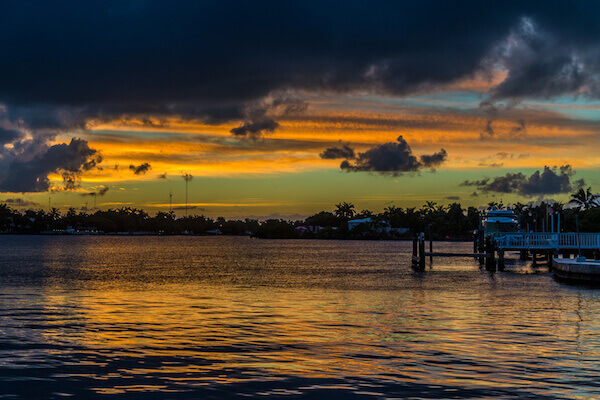
World Greener: Protecting the Waterfront
Waterfront property owners have first hand knowledge of the special contribution that lakes, ponds, rivers, streams, and bays make to our quality of life. It is no surprise that these water bodies’ health is a reflection of how we take care of the land. The key to maintaining pristine waters and creating a Florida-Friendly environment is to be a good neighbor to these natural resources.
Here are some opportunities that are available to protect your waters:
- Curb pollution-potential chemicals at their sources. Fertilizers, household toxins, eroding soils, and malfunctioning septic systems can dramatically affect water sources.
- Cut the amount of runoff that picks up pollutants and carries them to the waterway. This can be accomplished by minimizing impervious surfaces that create runoff. Use porous materials like mulch or gravel instead of asphalt or concrete for patios, driveways, and walkways.
- Capture runoff before it reaches the waterway by using shoreline buffer vegetation, rain barrels, or rain gardens.
Florida-Friendly Landscapes aiming to protect the waterfront practice the following:
- Remove invasive exotic aquatic plants by cutting, pulling, or raking. If using herbicides (which may require you to get a permit), remove dead plant material from the water to reduce pollution.
- Decrease wave action and increase habitat by placing clean native limestone rock in front of any seawall.
- Protect your native shoreline plants (i.e., mangroves in salt water; pickerelweed and duck potato in fresh water). Never prune mangrove or remove other vegetation without first seeking proper guidelines and permits.
- Establish a 10-foot maintenance-free zone along your shoreline. Do not mow, fertilize, or irrigate inside of this 10-foot zone.
- Properly dispose of household hazardous wastes. Never pour them down the storm drain. If you wouldn’t drink it, don’t dump it!
- Inspect and maintain your septic system once every three years.
- If possible, plant a boarder of low-maintenance plants between your lawn and shoreline/seawall to absorb nutrients and provide wildlife habitat.
- Where feasible, plant native aquatic vegetation in front of your seawall or along your shoreline.
- Create a rain garden (an area that soaks up the rain water during wet times and serves a beautiful garden all the time).
Another feature of Florida-Friendly living with the aim of preserving our bodies of water are watersheds. A watershed is an area of land in which all of the water that enters it, drains into a common water body. Also known as a drainage basin, it can be thought of as a “funnel” that collects surface water and ground water and drains it into a single stream, lake, ocean, or other reservoir. Hills and ridges usually separate one watershed from the next.
Humans, plants, and animals need clean water to survive, and the activities in a watershed determine the health of its water. Florida’s multibillion dollar tourism, agriculture, and manufacturing industries rely on clean water. Vegetation in a healthy watershed can filter pollutants, reduce erosion, and prevent flash flooding during storms. Urban development and other human activities can impact water quality. Because water flows freely across state and political boundaries, it is important to focus management plans on entire basins instead of single towns or tributaries.
Florida’s Watershed Restoration Framework was created to embrace this holistic, ecosystem-based approach and to integrate Florida’s longstanding water protection programs into more effective comprehensive action. The program specifically carries out provisions of the Florida Watershed Restoration Act, as well as other legal authorities, volunteer networks, public education, and financial assistance to clean up water pollution or prevent it in the first place.
The Florida Wetlands has a site to provide readers with a better understanding of our Florida environment, particularly let wetlands and wetlands related issues. Different counties have different resources, and they suggest that you read up in order to educate yourself. Similarly, the Florida Springs website is an interactive way to learn more about living a Florida-Friendly lifestyle and how that lifestyle extends to some of our springs. From the “Journey of Water” to learning more about what plants and animals we’re trying to protect, the site is a wonderful way to learn about our dynamic, diverse waters and all we can do to take care of them.
Taking care of our waters is an important part of living a Florida-Friendly lifestyle, and it’s important for us to discuss the best ways a homeowner in Florida can do what they can to contribute to keeping our waters clean.